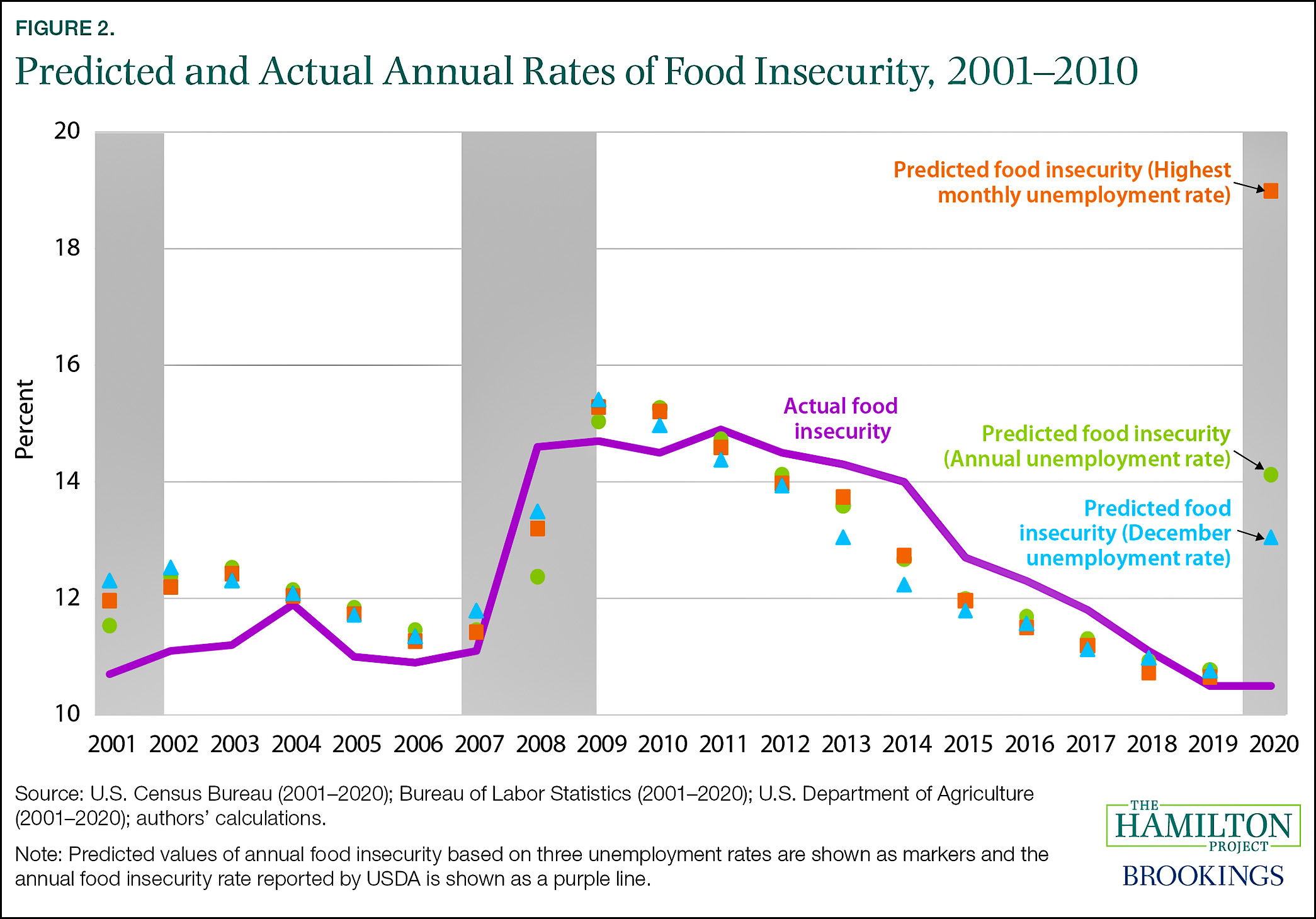Via Lauren Bauer at the Brookings Institution, here are the numbers for food insecurity in the United States, now including 2020:

As you can see, food insecurity is fairly easy to predict based on the unemployment rate. In 2020, however, food insecurity remained low even though the unemployment rate skyrocketed. This is due to the COVID-19 rescue bills that were passed earlier in the year.
You can take whatever lesson you want from this. One obvious one is that hunger is an easily solvable problem: just give people money. Or food stamps. Or food.
Another obvious one is that, on a purely economic basis, we did pretty well during the pandemic. There are exceptions—there always are—but generally speaking both the poor and the working class made it through with their personal finances intact or even improved.
On a similar note, in a month or so we'll get figures for evictions and general inability to pay rent following the end of the eviction moratorium, and I'm willing to bet that it will show little change. Why? Because I doubt that housing insecurity actually increased much in the first place.

Shirley you don’t mean the hanging out on the Capitol steps was just for show? …
Didn't know if you meant Cori Bush or the January 6, 2021, March on Washington, at first.
Of course housing insecurity didn't increase when there was a rental moratorium. It remains to be seen whether people have saved enough to pay their back rent. If they have saved a lot there won't be much insecurity. But if they have saved a lot this would also explain why people are apparently not eager to take up their old low-paying jobs. Of course there is also covid danger and I suspectthe media have exaggerated the labor shortage.
Here in my city there were many food distribution sites, often with long lines of cars as well as walk-ups. Existing distribution locations received food boxes from government programs to supplement what they normally had. I volunteered at 3 different programs at different times, and people were always saying how grateful they were the food. I am still at one site, and the food boxes have stopped, but the people still come, still say how grateful they are for the help. Also, the increase in SNAP benefits has been helpful for many.
Schools also worked hard to distribute food. Where I live they sent out school buses with boxes of food and we had our own monthly food shelf outside the school building.
Brookings not all that big on keeping chart titles up-to-date?
yet the chart goes to 2020... which I presume is the year that serves as the exception proving the rule that it is easy to predict food insecurity since the predictions were waaaay off for 2020 compared the the usual only ten or twenty percent off.
There is a reason for all this: Congress passed legislation intended to have just this effect. Kevin makes it sound as if this all happened by itself. But it is all due to Congress, more specifically to the Democrats, more specifically to Nancy Pelosi who managed to get the first rescue bill passed before the GOP realized what was going on (and to Trump--if he even realized what he was signing).
Now that the eviction moratorium is over and the unemployment extra payments have stopped we will probably see the situation worsen--unless the pandemic mysteriously goes away...
Drum's headline: "Hunger didn't increase during the pandemic"
The U.N. estimates that due to the effects of lockdowns in the West that over 130 million people were thrown into abject poverty and hunger.